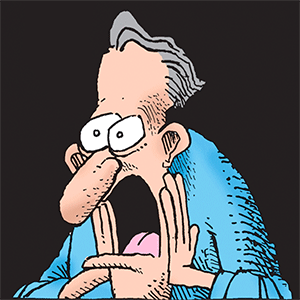Polio vaccination rates in some areas of the US hover dangerously close to the threshold required for herd immunity – here's why that matters
Published in Health & Fitness
The herd immunity threshold for a given disease is calculated based upon the expected number of individuals who an infected person would spread it to if they were susceptible. The higher the number of individuals who would become infected, the higher the percentage of the community or population that needs to be vaccinated to avoid continued spread of the disease.
For poliovirus, researchers estimate that between five and seven individuals would be infected for each case if those people were susceptible. Based upon these calculations, experts determined that at least 80% of a community or population should be vaccinated against poliovirus to prevent its spread.
Throughout the U.S., vaccination rates for polio vary significantly.
The CDC recommends that infants and young children receive a four-dose schedule of the inactivated poliovirus vaccine at 2 months, 4 months, 6 to 18 months and 4 to 6 years. For those who begin vaccination later – as older children, teens or adults – three doses is considered to be complete vaccination. This is because three doses of inactivated poliovirus vaccination have been shown to provide between 99% and 100% protection against severe disease.
Although all U.S. states are currently above the 80% herd immunity threshold for poliovirus, there are areas within the country that include many pockets of unvaccinated or undervaccinated individuals – those who have not received a total of three lifetime doses of the inactivated vaccine.
New York state, for example, holds one of the highest kindergarten polio vaccination rates in the country, with 97.9% of kindergartners vaccinated in the 2020-2021 school year. But current estimates by the New York State Department of Public Health suggest that only 79% of 2-year-olds in that state have received three doses of the polio vaccine.
Further, in certain pockets and counties of New York, such as Rockland, Orange and Sullivan, three-dose vaccination rates may be far lower based on the 2-year-old age group, which is the only data that is available by county: Rockland 60%, Orange 59% and Sullivan 62%. In fact, 46% of counties in New York are below the three-dose poliovirus vaccination herd immunity threshold for 2-years-olds.
When children fall more than one month behind on recommended polio vaccination, doctors recommend routine catch-up throughout adolescence.
Because most adults in the U.S. today were vaccinated as children and the U.S. had eliminated polio as of 1979, there was little reason for health experts to believe an adult would come into contact with poliovirus in the U.S. For that reason, catch-up vaccination for adults has not been included on the routine adult vaccination schedule.
But in August 2022, the CDC updated its guidelines. In light of the fact that there are communities where poliovirus vaccination rates have fallen below the 80% threshold needed for herd immunity, coupled with the ongoing circulation of poliovirus in New York, the CDC now recommends that all unvaccinated or undervaccinated adults receive a poliovirus vaccination.
Additionally, the CDC suggests that some fully vaccinated adults who are at increased risk of exposure may benefit from a single lifetime poliovirus booster dose. This includes health care providers who care for those with poliovirus, or people traveling to areas where poliovirus has not been eliminated.
If you are unsure if you need vaccination or what steps you should take, talk to your pharmacist or primary care physician.
This article is republished from The Conversation, an independent nonprofit news site dedicated to sharing ideas from academic experts. It was written by: Jennifer Girotto, University of Connecticut. If you found it interesting, you could subscribe to our weekly newsletter.
Read more:
Fears of a polio resurgence in the US have health officials on high alert – a virologist explains the history of this dreaded disease
The latest polio cases have put the world on alert. Here’s what this means for Australia and people travelling overseas
Jennifer Girotto consults for Lexi-Comp. She has received grant funds from Pfizer to support independent quality improvement specific to outpatient antimicrobial stewardship.







Comments